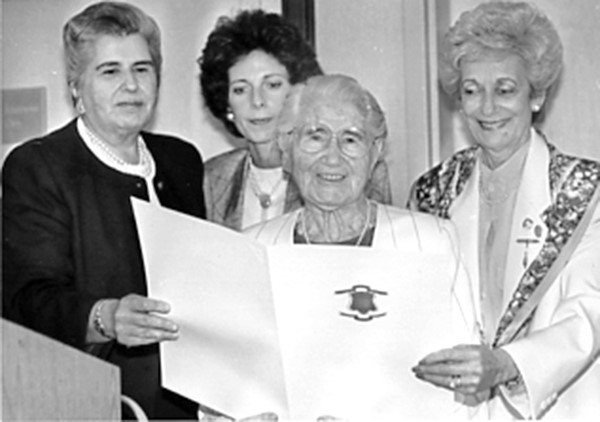A new land, a new name
Birth certificates are legal documents. We need them to secure other legal documents, such as Social Security cards and work permits, driver’s licenses, passports, marriage licenses. They are prosaic, matter of fact, but are of invaluable help to genealogists or for those searching for lost relatives. Often, beyond the simple stated facts, they have stories to tell about the experience of scores of immigrants in the last century.
My birth certificate was issued by the City of Rochester, in Monroe County, New York. It affirmed that a baby girl was born in Highland Hospital to parents Bernard and Irene Segal. The weight and the date shall remain privileged information.
My parents had decided on a name dear to their hearts. They chose Gitl Ruchl. Gitl was my maternal grandmother, Ruchl my paternal grandmother. In this way, both my grandmothers were memorialized. Both were part of my goodly inheritance – not of money, but of history.
But Gitl Ruchl does not appear on my birth certificate. On the official document, the aforementioned baby girl was named Geraldine Ruth. Geraldine Ruth? Geraldine was not a name found in Orinen, Ukraine, the shtetl my parents had left barely seven years before, nor were there any Ruths on our family tree. Therein lies my story, a story similar and familiar to the experience of many of my generation.
Approximately 3 million Jews from Eastern Europe immigrated to the United States between 1880 and 1920. They came to escape the pogroms and restrictive policies of the czars, the poverty and lack of opportunity for them.
World War I ended the massive flow of refugees. In the 1920s, the number of Eastern European Jews who could legally come to this country was limited by quotas. My parents, fortunately, had family here to vouch for them and who sent them tickets for a passage in steerage. After a harrowing trip, they were allowed to enter the “Promised Land,” the land of promise.
My parents gave me a name dear to their hearts, but were persuaded to put another on the birth certificate. They were told, you live in America now, not in the Old World. Your child was born here, choose an American name for her. That way she will fit in better in school. No one will make fun of her name.
This argument was not unique to my parents or their situation. It was part of the well-meant process of acculturating immigrants, of helping newcomers shed their green-ness, of “fitting in better.” These good intentions motivated my Americanized aunts, who saw to it that although Beryl and Chaya Segal left Orinen, Bernard and Clara Segal arrived in Minneapolis.
Irene later replaced Clara on my mother’s citizenship papers because her cousin insisted it was a prettier name, more modern. Chaya felt neither like a Clara nor an Irene, but she acquiesced. At home, she was still Chaya. But what mattered was the legal document on which the name was written. Officially, my mother was now Irene Segal, American citizen – but in her heart she would always be Chaya.
My parents ultimately agreed to use an American name on my birth certificate. Like parents everywhere, they wanted the best for their children. If it would help their daughter fit in, so be it (but at home, they called me Gitele).
Their friend chose a “glamorous” name – Geraldine, as in Geraldine Farrar, the star of opera and film, noted for her beautiful voice. If you have ever heard me sing, you would appreciate the irony.
Linked to the generations of women named Gitl and Ruchl on our family tree, there was now a totally new name, an American name.
GERALDINE S. FOSTER is a past president of the R.I. Jewish Historical Association. To comment about this or any RIJHA article, contact the RIJHA office at info@rijha.org or 401-331-1360.








